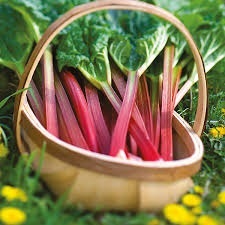October: and we were thrown back into the cold, wet winter early last week, a bit of a shock to the system for us and the new spring growth I am sure! However still lovely blossom about and rhododendrons and deciduous azalea buds opening, how lovely they are, in my view equal to any beautiful tropical flowers.
Roses will have enjoyed a good deep drenching, I had spread old stable manure around a day before the rain. Getting food down into roots of roses during early growth will set them on the right path to staying healthy and strong. It is weak growth that attracts disease and aphids.
Lavenders are putting on good growth with the absence,( so far) of spittle bugs, if these bugs do become a problem for you spraying will not work, the spittle surrounding them is a barrier to pesticide. A forceful hosing will dislodge them and hopefully drown a few.
Every week something new is popping up in my perennial boarders, so many spring delights like Solomon seal, Lily of the valley, tall phlox, amaryllis,Lily and iris, what a treat we are in store for.
Sweet peas are a delight in any garden, get them planted now in front of a climbing frame, be it wire netting or wire strung out along a wall or fence for them to twine and cling onto. Once up they will give a wonderful flower display with fragrance drifting about your garden right through summer. Sweet peas thrive on a good amount of compost / old manure laid in a trench below where they are planted to sustain them as they grow high.
Dahlia tubers can go in now, they will start to make a move as the soil warms, if your dahlia beds are too full now is the time to reduce them by digging out and halving the clump with a sharp spade then replanting one half and maybe planting the other half some where else in your garden or pass it on to a gardener friend. If you are wanting to introduce dahlias to your flower beds we have a variety of clumps at the Garden Corner in the Resource Recovery park.
Fruit: Strawberries plants should be in and beginning to bud, raised beds filled with good manure enriched compost work well for strawberries and once plants get going a layer of pine needles will keep fruit clean and suppress weeds. Gooseberries and currant bushes are leafing up well and bee's are doing their important job visiting blossom on fruit trees during warm sunny days so cropping should be good this summer.
Herbs: are making strong growth now in readiness for summer menus, break up clumps now should you need to and they will recover quickly. Once leafed up they need to be harvested often to stop running to seed.
Vegetables: A great time for planting out veg as that last heavy rain will have soaked down deep the ground is warming. It should be ok to plant beans now, they will not move until the warmth in the ground is to their liking. Peas should be romping up netting on warm day's, cold snaps will hold them back. Keep planting veg seeds and plants, a few at a time so you can have the continuous thing happening.













